Inline Drip Emitters
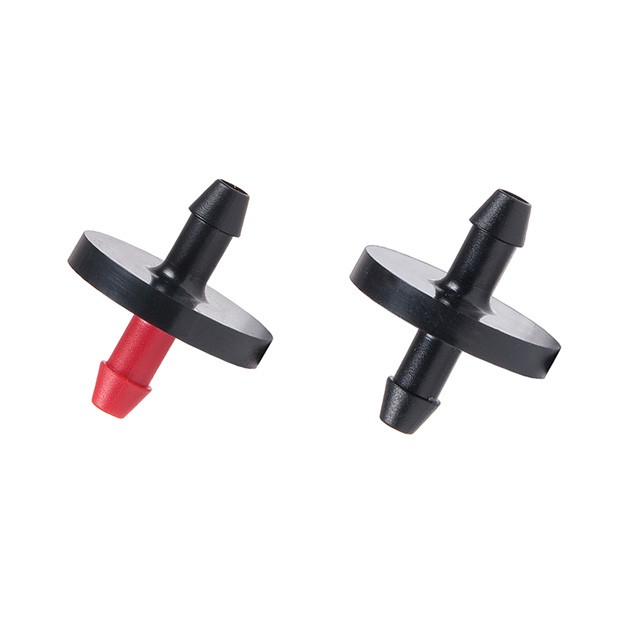

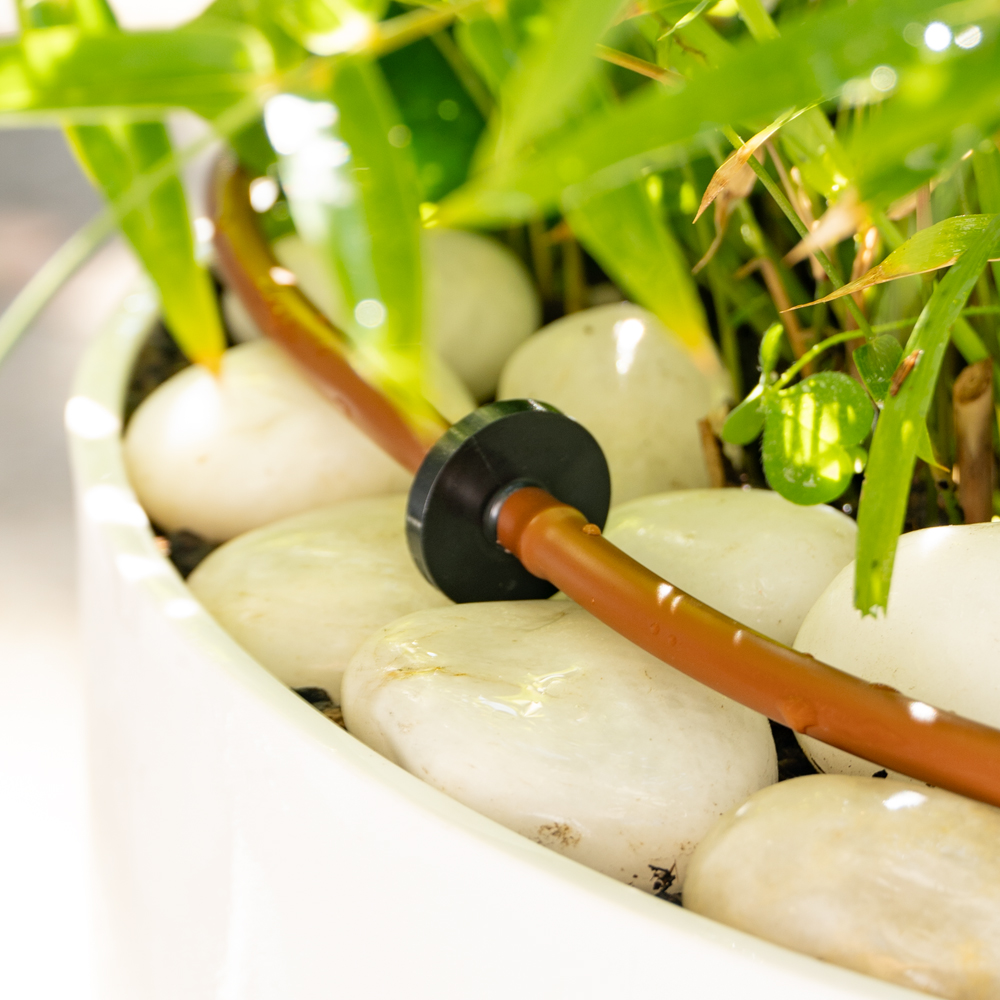
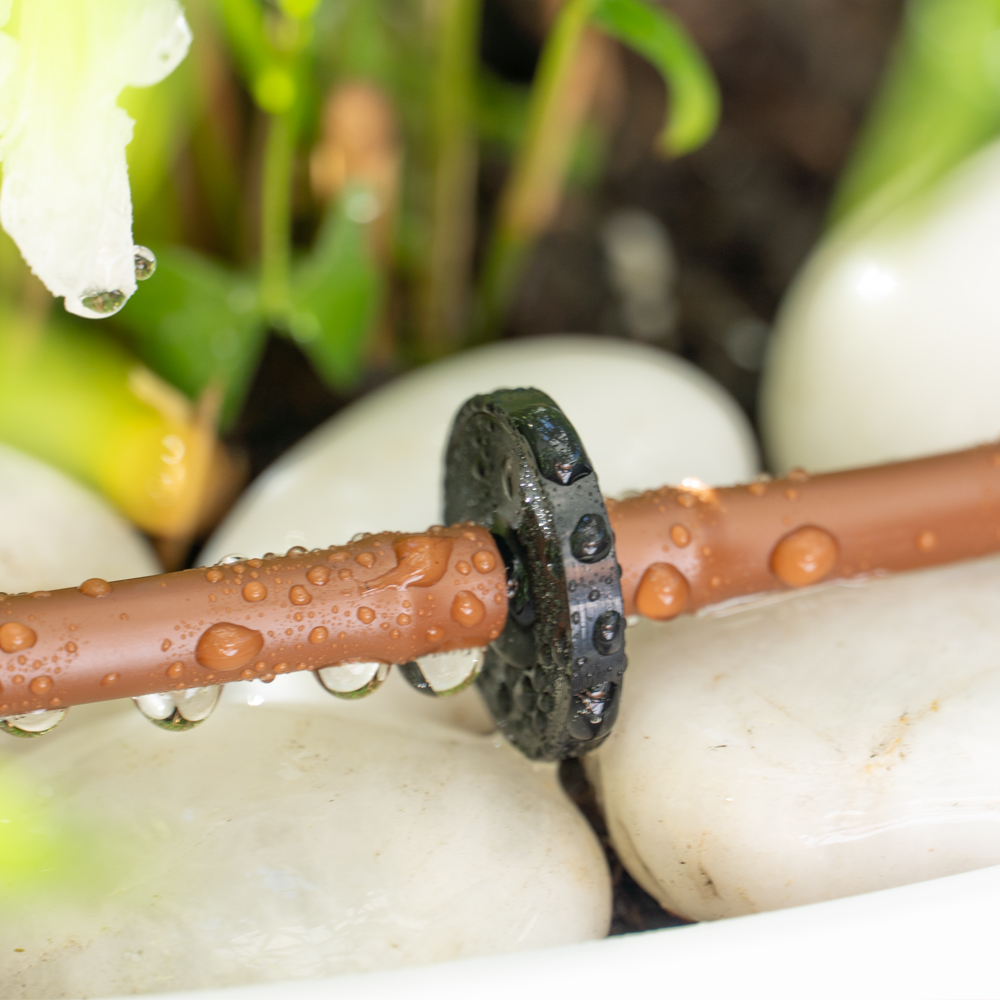
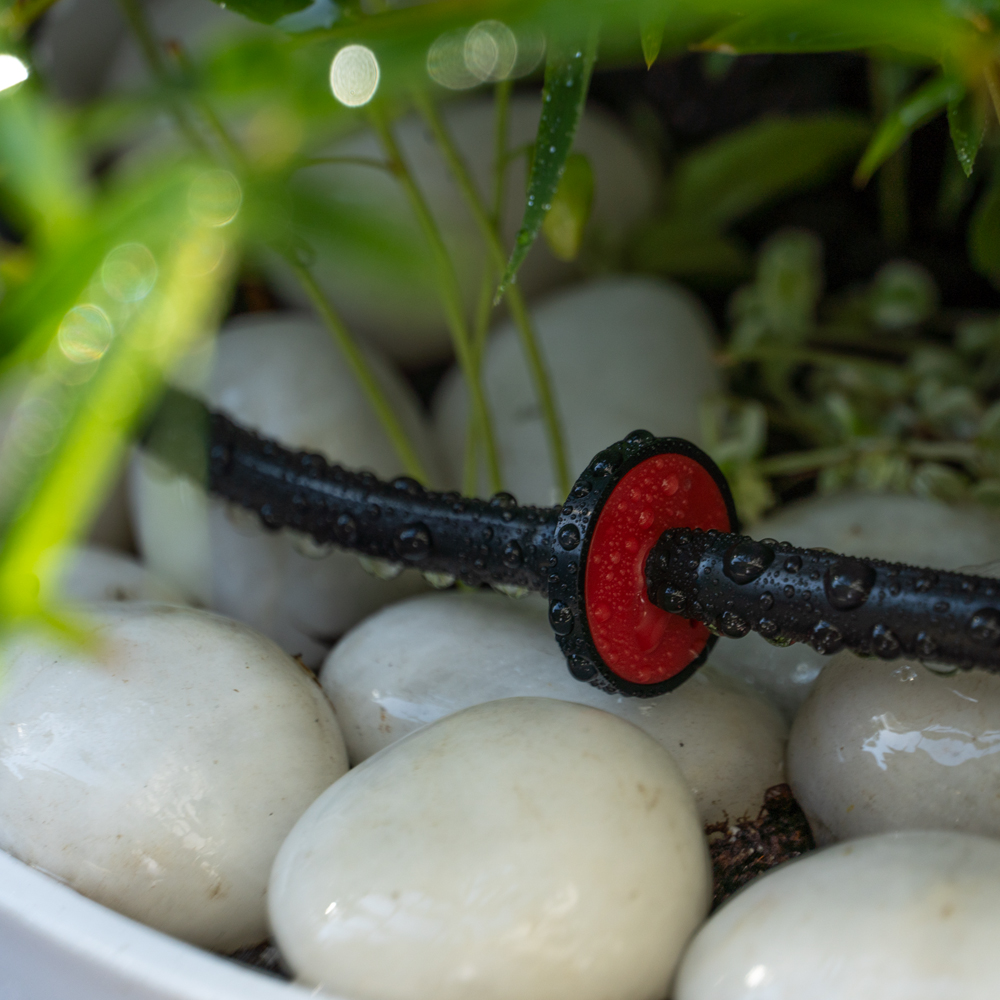
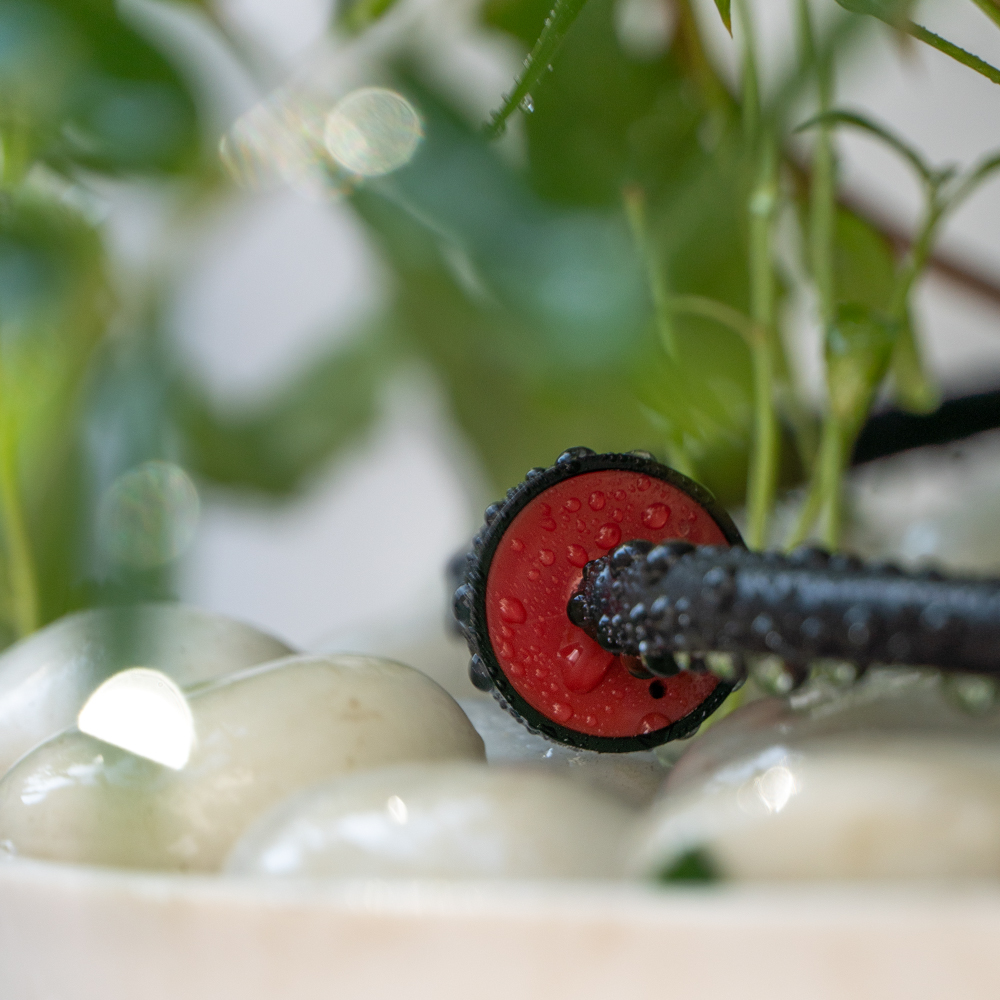
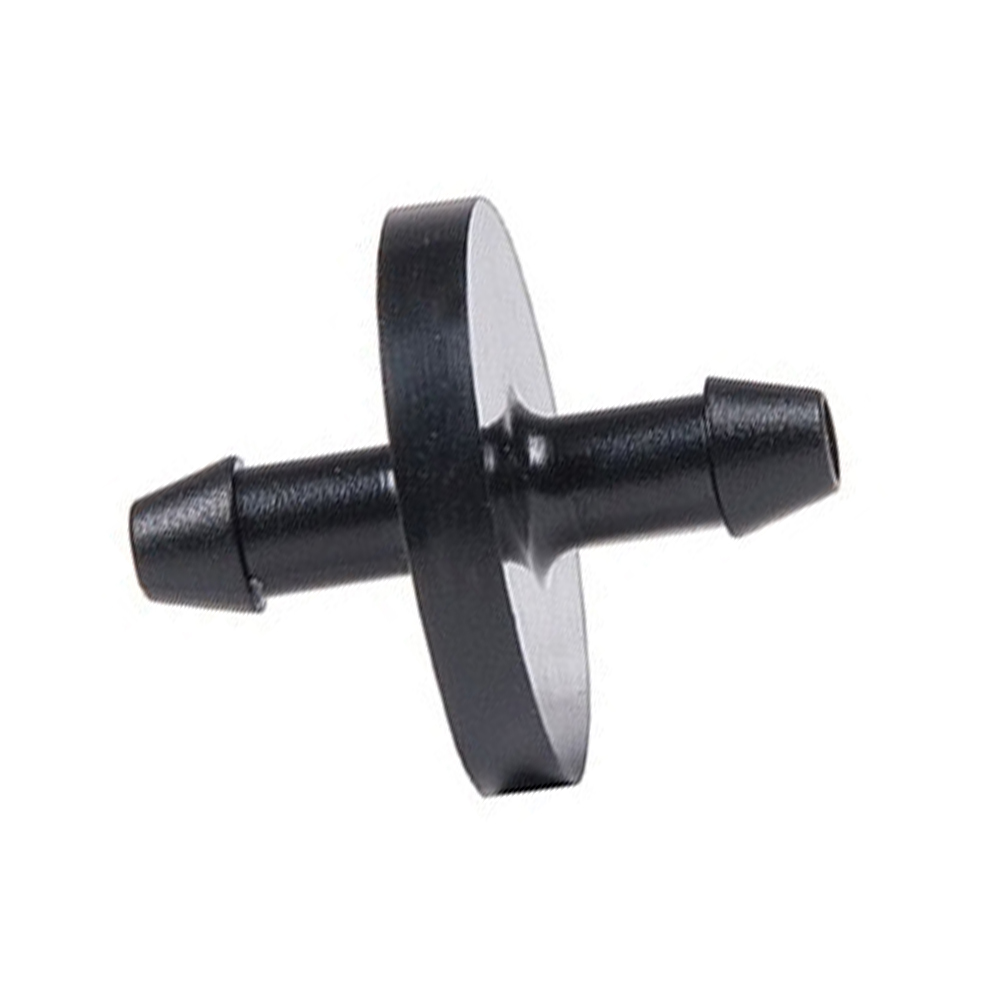
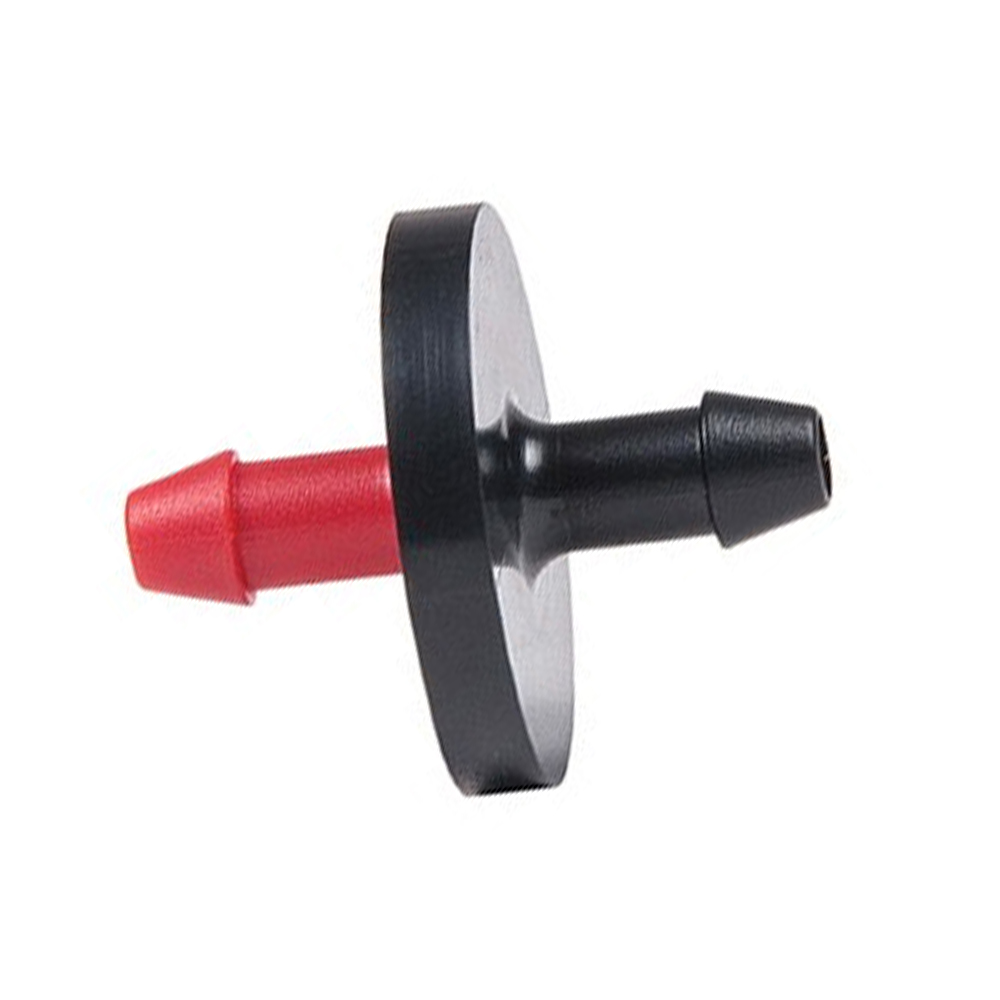
DIG Inline Drip Emitters offer flexibility and simplify the installation for residential drip irrigation systems. Their rate of flow depends on the inlet pressure; with higher pressure the flow will increase, with lower inlet pressure, it will decrease. The drip emitters’ nominal flow rates are .5 and 1 GPH at 15 PSI. Available in packs of 10 and 25, these emitters are ideal for use with ¼” micro tubing as the main line in pots, baskets, planter boxes, vegetable gardens and for low-pressure gravity feed systems. Install the drip emitters “inline” as needed in any spacing with the 1/4″ micro tubing as the main line
Features
- Color-coded to easily identify flow rate
- The drip emitters can be installed where desired along the 1/4″ micro tubing
- Ideal for a loop-type layout
- Turbulent flow through a labyrinth-water-passage design reduces likelihood of clogging
- Uniform flow rate at low pressure
- 1/4″ barbed inlet and outlet for installation into 1/4″ micro tubing
- Resistant to chemicals and fertilizers used in landscape applications
- Constructed of UV-resistant, durable plastic material to withstand the most adverse conditions
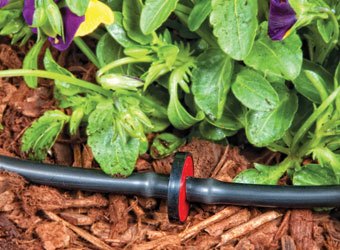
How to Order
| MODEL | DESCRIPTION | COLOR | IMAGE |
|---|---|---|---|
| WL0510B | .5 GPH In-line Drip Emitter (pack of 10) | Red/Black |
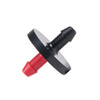
|
| WL0525B | .5 GPH In-line Drip Emitter (pack of 25) | Red/Black | |
| WL110B | 1 GPH In-line Drip Emitter (pack of 10) | Black/Black |
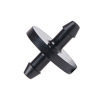
|
| WL125B | 1 GPH In-line Drip Emitter (pack of 25) | Black/Black |
Specifications
- Operating pressure range: 5 to 25 PSI
- Recommended operating pressure: 25 PSI (use with model D46 25-PSI pressure regulator)
- Flow rates and color codes:
- .5 GPH color code – red
- 1 GPH color code – black
- Inlet side: 1/4" barb
- Outlet side: 1/4" barb
- Filter requirement: minimum of 150 mesh
- Material: polypropylene
Flow rate in gallon per hour @ 5 to 30 PSI
| Color | Red | Black |
|---|---|---|
| Nominal Flow rate | .5 GPH | 1 GPH |
| 5 PSI | .23 | .57 |
| 10 PSI | .34 | .81 |
| 15 PSI | .42 | .98 |
| 20 PSI | .5 | 1.15 |
| 25 PSI | .56 | 1.21 |
| 30 PSI | .62 | 1.41 |
Maximum number of .5 GPH red button inline drip emitters on 1/4" vinyl micro tubing with .156 ID
| Drip emitters spacing | 1' | 2' | 3' | 4' |
|---|---|---|---|---|
| Flow rate @ 25 PSI | .56 | .56 | .56 | .56 |
| Maximum length | 22 | 36 | 48 | 56 |
| Flow rate in GPM | .21 | .17 | .15 | .13 |
| Flow rate in GPH | 12.3 | 10.1 | 9.0 | 7.8 |
| # of drip emitters | 22 | 18 | 16 | 14 |
| Velocity (f/s) | 3.53 | 2.86 | 2.52 | 2.18 |
| Total head loss in PSI | 5.11 | 5.59 | 5.88 | 5.27 |
Maximum number of 1 GPH black button inline drip emitters on 1/4" vinyl micro tubing with .156 ID
| Drip emitters spacing | 1' | 2' | 3' | 4' |
|---|---|---|---|---|
| Flow rate @ 25 PSI | 1.21 | 1.21 | 1.21 | 1.21 |
| Maximum length | 14 | 22 | 27 | 36 |
| Flow rate in GPM | .28 | .22 | .18 | .18 |
| Flow rate in GPH | 16.9 | 13.3 | 10.9 | 10.9 |
| # of drip emitters | 14 | 11 | 9 | 9 |
| Velocity (f/s) | 4.7 | 3.69 | 3.02 | 3.02 |
| Total head loss in PSI | 5.9 | 5.76 | 4.35 | 6.30 |
About
The Inline Button Drip Emitters are useful in small systems and short runs using 1/4″ micro tubing as the main lateral. One of the main features of these drip emitters is their ability to operate under very low pressures and with lower flow rates making them ideal for gravity feed systems.
Install the drip emitters directly into the micro tubing. Within the layout, we strongly suggest that a minimum of two drip emitters should be placed per plant on opposite sides of the plant, under the plant canopy, centered between the plant stem and the outer edge of the plant canopy.
When using single drip emitters, it is important to select the correct flow rate in order to achieve a wetted pattern shape that can cover at least 70% of the plant root zone. In sandy soil or potting soil, water tends to drain quickly (gravitational force) with little lateral movement, so applying a higher flow rate over a given time period will produce a wider pattern. Using .5 GPH drip emitters for one hour will provide a smaller wetted area then using 1 GPH emitters for the same time, due to the soil composition and characteristics.
One of the most common errors in installing drip irrigation is using too few emitters per plant. All too often only a single emitter with preset flow is placed at the base of a newly planted tree, shrub or rose. In clay soils, a single drip emitter can wet a three to four foot diameter; on sandy soils, the same layout using the same drip emitter will only wet an area of a few inches. Because plant roots can grow up to a few feet a year depending on the plant and location, after one year the diameter of the root system would be much larger than the area covered by the one drip emitter. A single drip emitter per tree or shrub could restrict root development as early as the first year after planting if flow is not adjusted or another drip emitter is not added. We highly recommend adding more than one drip emitter per plant, depending on plant size.
Basic installation recommendations for this product include first reviewing the area and then making a drawing of the garden or site with your preferred layout.
If automation is required, use one of DIG’s hose end timers or battery operated controllers. The ideal controller should have flexible scheduling and two to four start times per day for added flexibility.
Product installation
- Using the drip tubing as the main lateral or as a sub lateral, lay out the drip tubing per your layout drawing. Secure the drip tubing to the ground using stakes (model R60) in key areas and add more stakes as you unroll the drip tubing. Add stakes every 10′-12′ and at the end of each section, or as needed. An extra 1% of drip tubing length should be added to each lateral to compensate for contraction at low temperature.
- Throughout the installation and per your drawing layout, add, if needed, 1/2″ fittings such as tees (model C35) and elbows (model C36), leaving the end of the drip tubing open. To install the 1/2″ compression drip fittings, cut the drip tubing with a hand pruner, being careful to keep dirt from entering the line. Hold a fitting in one hand and the drip tubing in the other and force the drip tubing into the compression fitting by moving it from side to side.
- The drip emitters are installed along the micro tubing at varying or specific intervals. The distribution uniformity of water from the drip emitters along the line depends on the incoming pressure, number of drip emitters used per lateral and the length of the laterals. Special care should be taken to ensure high uniformity of water along the laterals by not exceeding the product recommendations (see Product Specifications).
- To install the in-line drip emitters, follow the steps below:
- Insert a 1/4″ barb into the end of the micro tubing
- Punch a hole into the drip tubing using the small punch (model D44) or the gun punch (model 16-035), and insert the micro tubing into the drip tubing.
- Layout the micro tubing to the pot, basket, or planter location.
- Install the drip emitters where desired along the 1/4″ micro tubing by cutting the micro tubing (direction of drip emitter within the line does not matter), inserting one of the drip emitter’s barbed sides into the micro tubing and continuing by adding additional lengths of 1/4″ micro tubing (we highly recommend not exceeding four feet of micro tubing) (vinyl – models B38 for 50′ and B38100 for 100′, or poly – models B38P for 50′ and B38100B for 100′).
- Add a stabilizer stake (model P35B for pack of 10) and secure the micro tubing to the ground.
- Close the end of the 1/2” poly tubing [if applicable] using the hose end (model Q58) or figure “8” (model F68B).
- Close the end of the 1/4” micro tubing by installing a 1/4” goof plug [model G79B] or a conventional one-way button drip emitter into the end of the 1/4” line.
- Pressure-test the system to identify leaks in the drip tubing laterals, fittings and micro tubing, and then program the hose end timer or battery operated controller.
